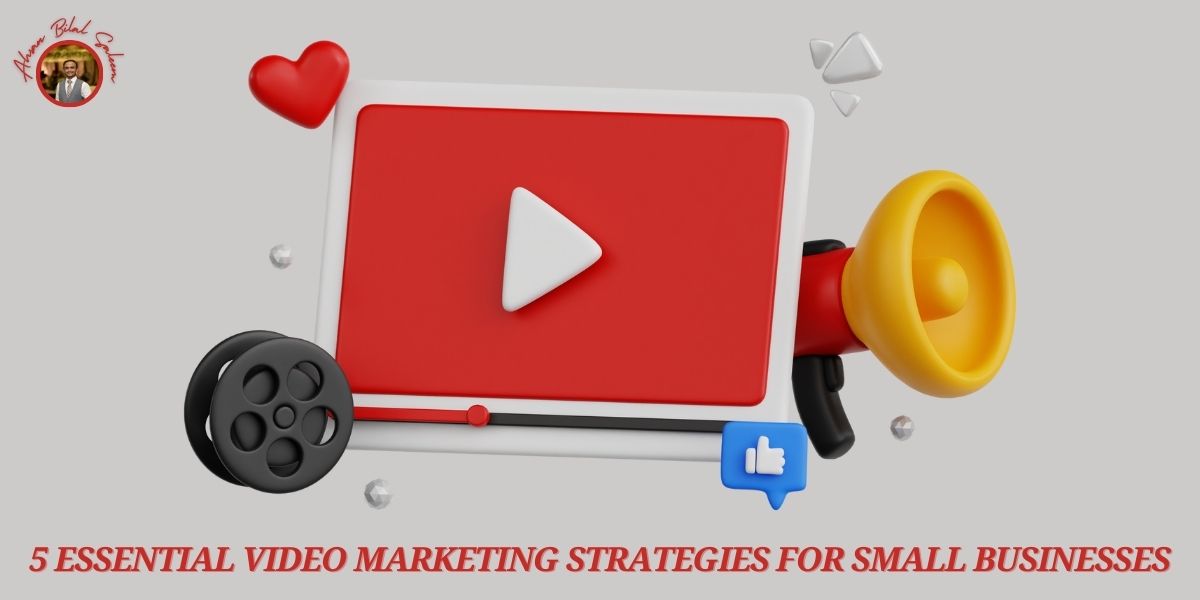5 Essential Video Marketing Strategies for Small Businesses
Video marketing has become a powerful tool for businesses of all sizes, especially small businesses looking to increase brand visibility, engage audiences, and drive conversions. With the rise of platforms like YouTube, Instagram, and TikTok, video content has the potential to reach vast audiences and deliver impactful messages. However, for small businesses with limited resources, creating an effective video marketing strategy can be challenging. In this article, we’ll explore five essential video marketing strategies that can help small businesses get the most out of their efforts.
Define Your Goals and Audience
Before diving into video production, it’s important to have a clear understanding of your goals and target audience. Are you aiming to increase brand awareness, boost product sales, or engage your existing customers? Characterizing your targets will direct the sort of video content you make.
Additionally, knowing your audience is crucial. Research their preferences, demographics, and the platforms they use. For example, if your audience consists of younger consumers, platforms like TikTok and Instagram might be ideal for sharing short, engaging videos. On the other hand, if you’re targeting professionals, YouTube and LinkedIn may be more effective. Once you know who you’re speaking to, you can tailor your video content to resonate with their interests and needs.
Leverage User-Generated Content
User-generated content (UGC) is a cost-effective and authentic way to promote your brand through video. Encourage your customers to share videos of themselves using your products or services and showcase their experiences. UGC provides social proof, which can help build trust and credibility among potential customers.
Small businesses can run social media campaigns asking followers to submit videos with specific hashtags or feature customer testimonials in video form. These authentic endorsements can be more persuasive than traditional advertising because they come from real people, which resonates with new audiences. By featuring user-generated videos, you can create a sense of community around your brand while boosting your content library with minimal cost.
Create How-To and Tutorial Videos
One of the most effective ways to engage your audience is by providing value through educational content. How-to and tutorial videos allow you to showcase your expertise, demonstrate the benefits of your products or services, and help your audience solve problems.
For small businesses, these videos can be particularly effective because they offer viewers actionable insights. For example, if you run a bakery, you could create videos teaching people how to make simple desserts at home, while subtly promoting your products in the process. If you’re in the fashion industry, try tutorials on how to style your clothing items in various ways. By making content that teaches and assists your crowd, you’ll with positioning your business as a confided in asset in your specialty.
Optimize Videos for SEO
SEO isn’t just for blogs and websites—it’s essential for videos as well. Optimizing your videos for search engines can help increase their visibility, allowing more people to discover your content. To do this, focus on adding relevant keywords to your video titles, descriptions, and tags. Additionally, include a compelling thumbnail image and closed captions to make your videos accessible to a broader audience.
Platforms like YouTube have robust search functionalities, and by using the right keywords and phrases, your videos are more likely to appear in search results or recommended feeds. Don’t forget to embed your videos on your website and share them across multiple channels to increase exposure. Optimizing your videos not only boosts visibility but also helps with long-term engagement, as more viewers will come across your content over time.
Promote Your Videos Across Multiple Channels
Making an incredible video is only the initial step. Promoting it across multiple channels is equally important to maximize reach. Small businesses should take advantage of all available platforms, including social media, email marketing, and websites, to distribute their video content.
For example, share your video on Instagram Stories or IGTV, upload it to YouTube, and embed it in your blog posts. You can also repurpose the content into shorter clips for TikTok or Facebook ads. Promoting videos through email campaigns is another effective tactic. Include video links in newsletters to keep your subscribers engaged.
Remember to tailor the format and length of your videos based on the platform. Short-form videos tend to perform better on social media, while longer, more detailed videos are suited for YouTube or your website. By diversifying your video marketing efforts and promoting your content across different channels, you can expand your reach and increase the chances of engagement.
Conclusion
Video marketing presents small businesses with an incredible opportunity to connect with audiences, build brand awareness, and drive conversions. By implementing these five essential strategies—defining your goals and audience, leveraging user-generated content, creating how-to videos, optimizing for SEO, and promoting across multiple channels—you can make the most out of your video promoting endeavors without burning through every last cent. As video continues to dominate the digital landscape, adopting these strategies will help your small business stay competitive and thrive in a crowded market.










